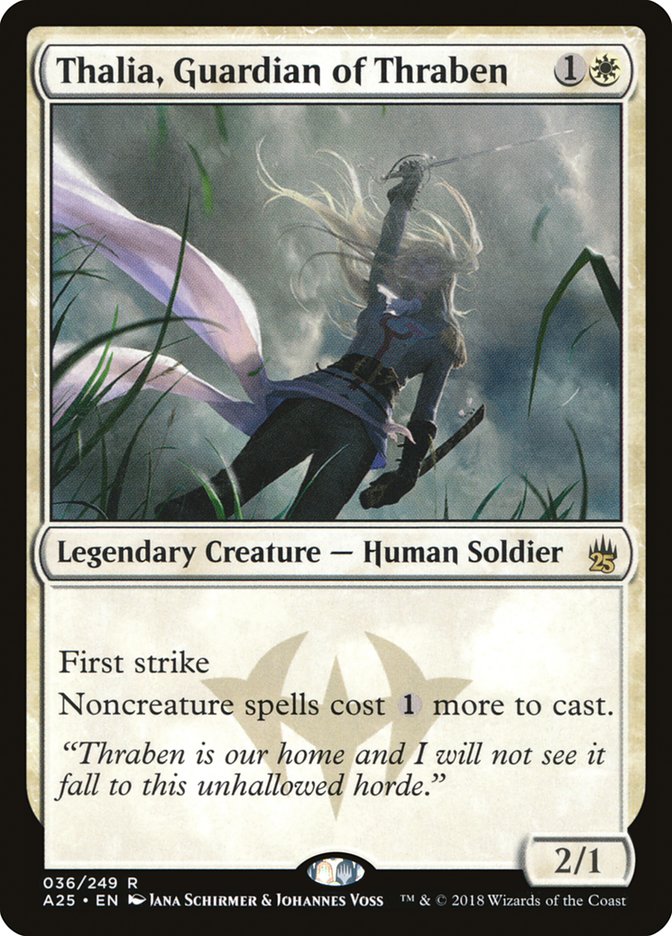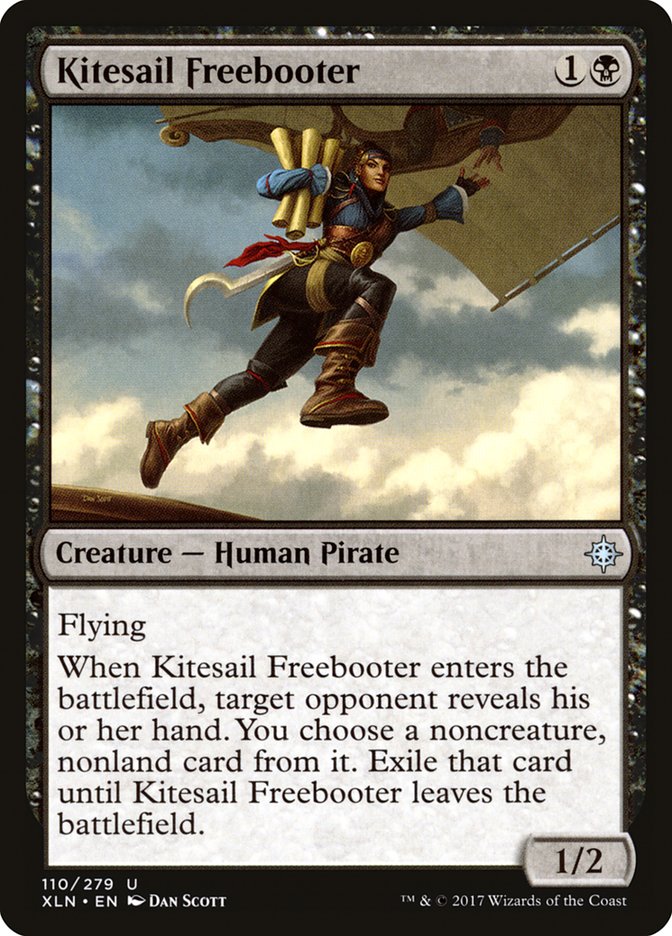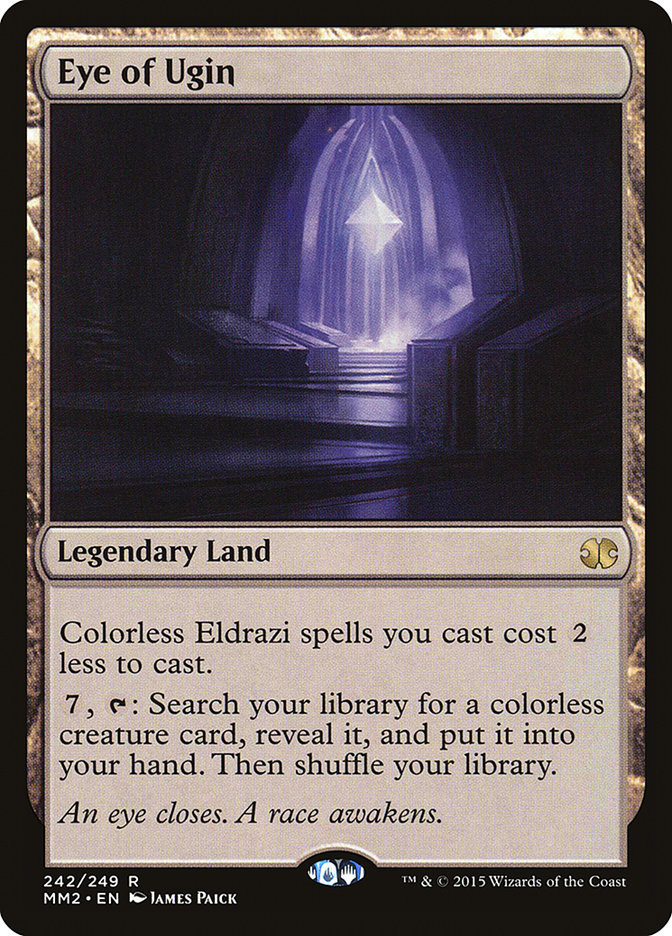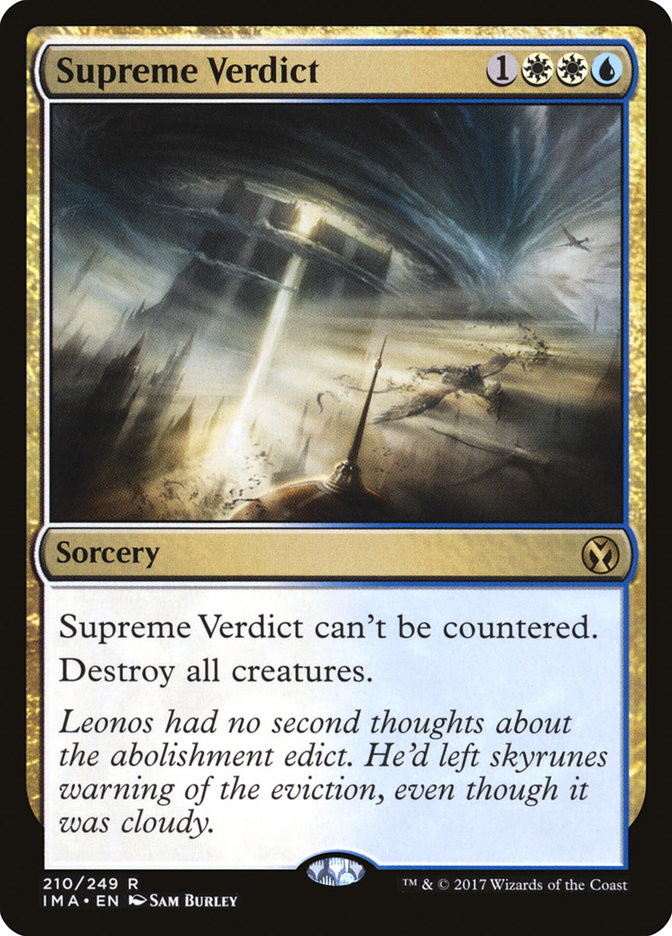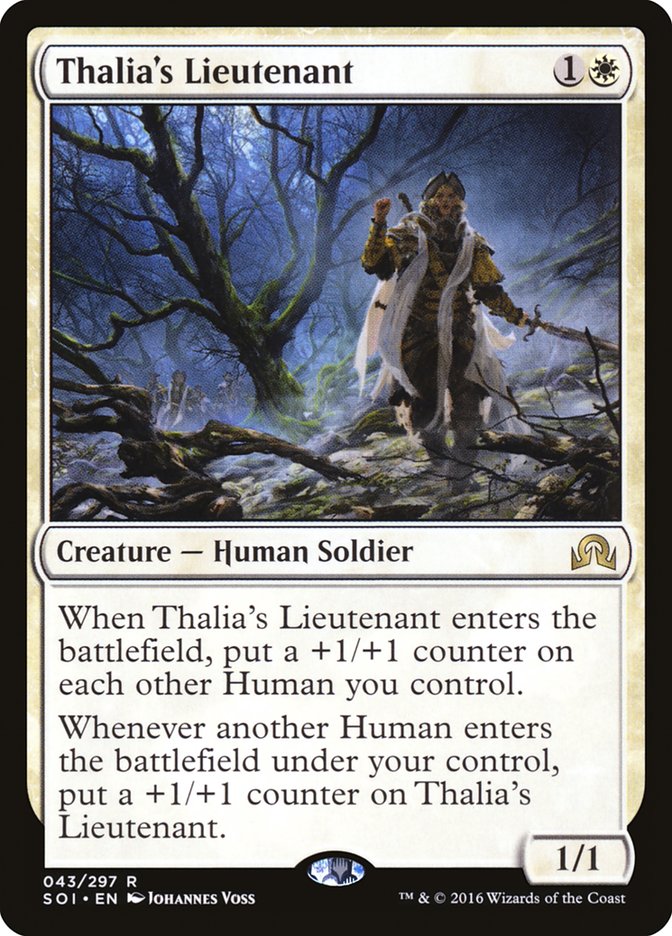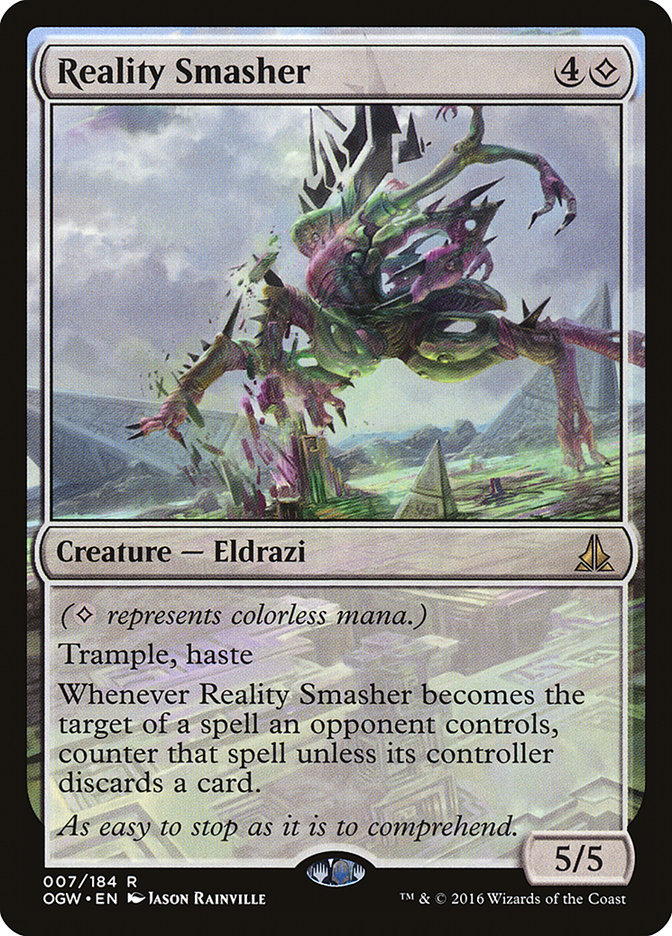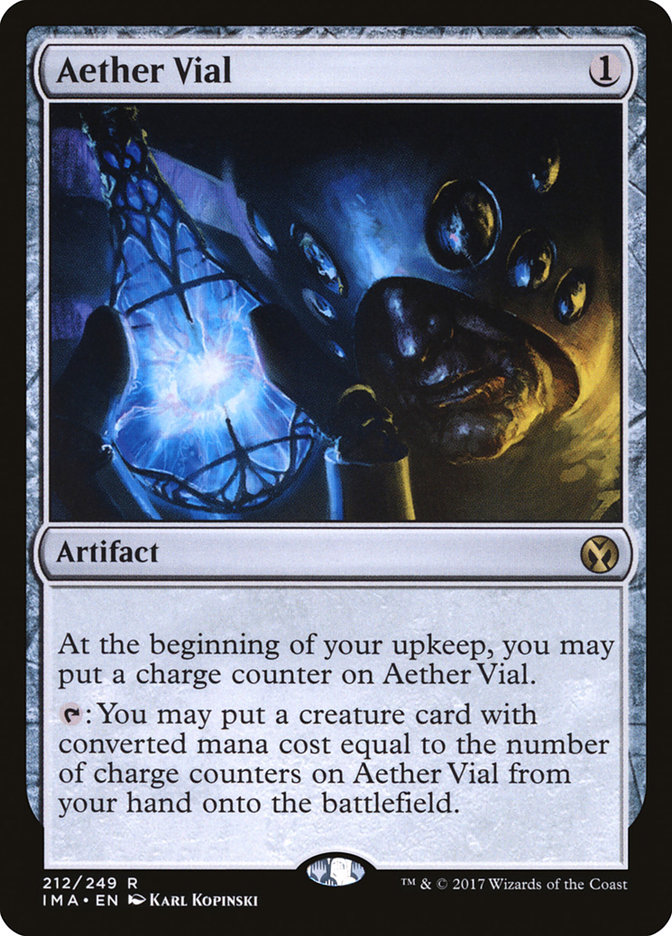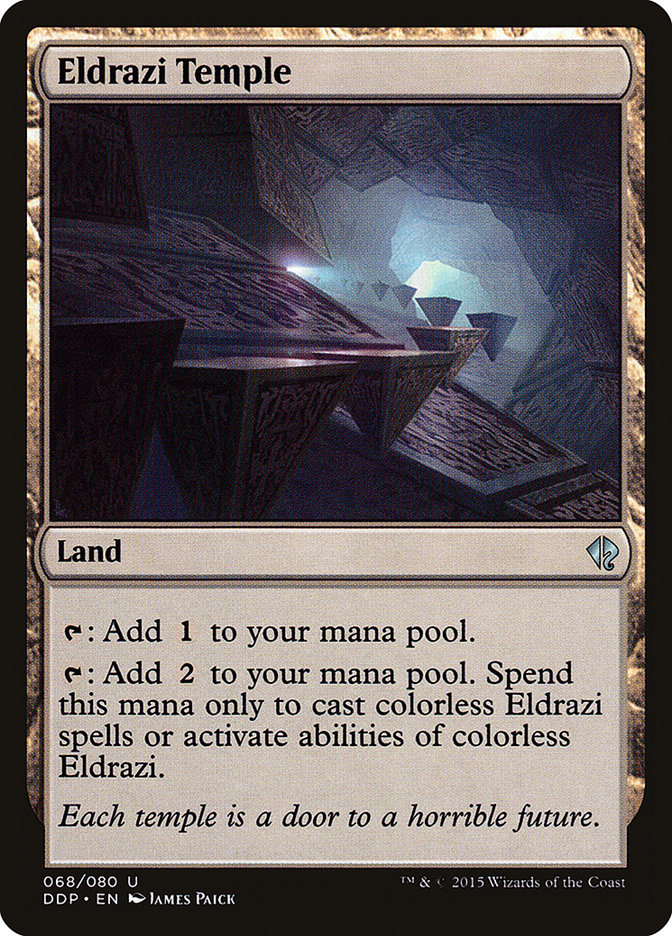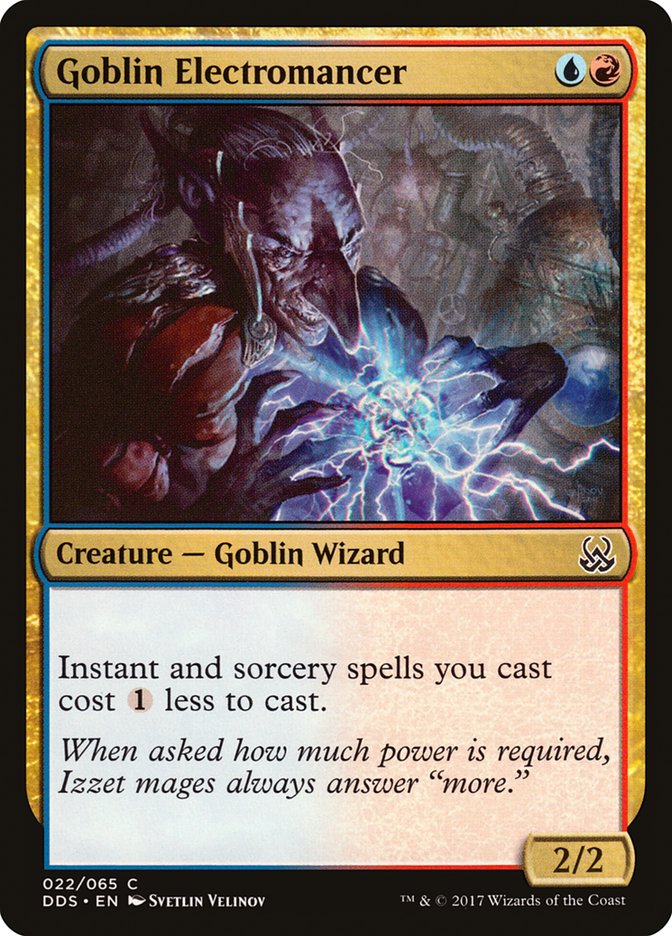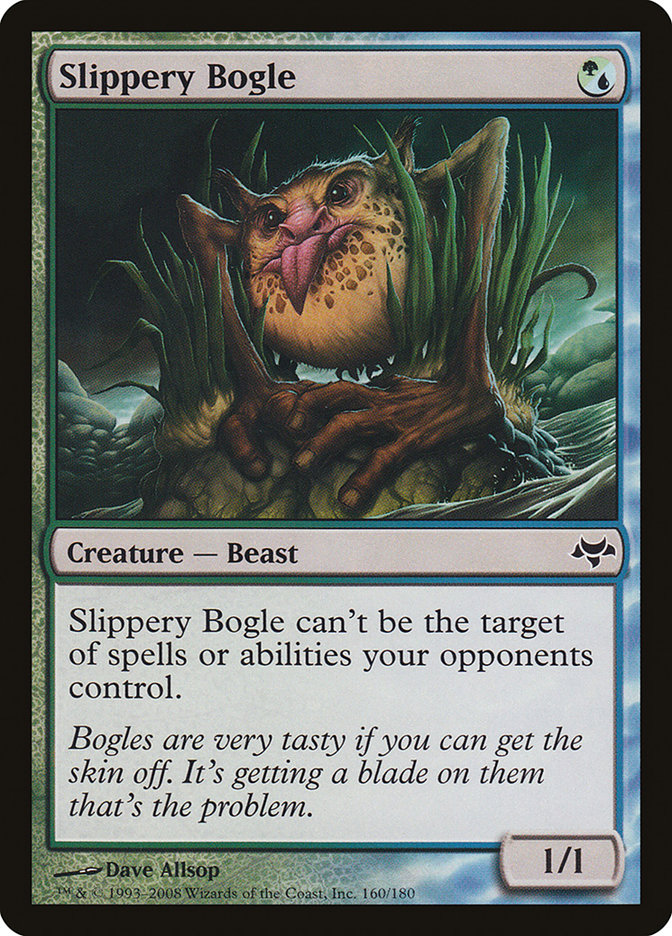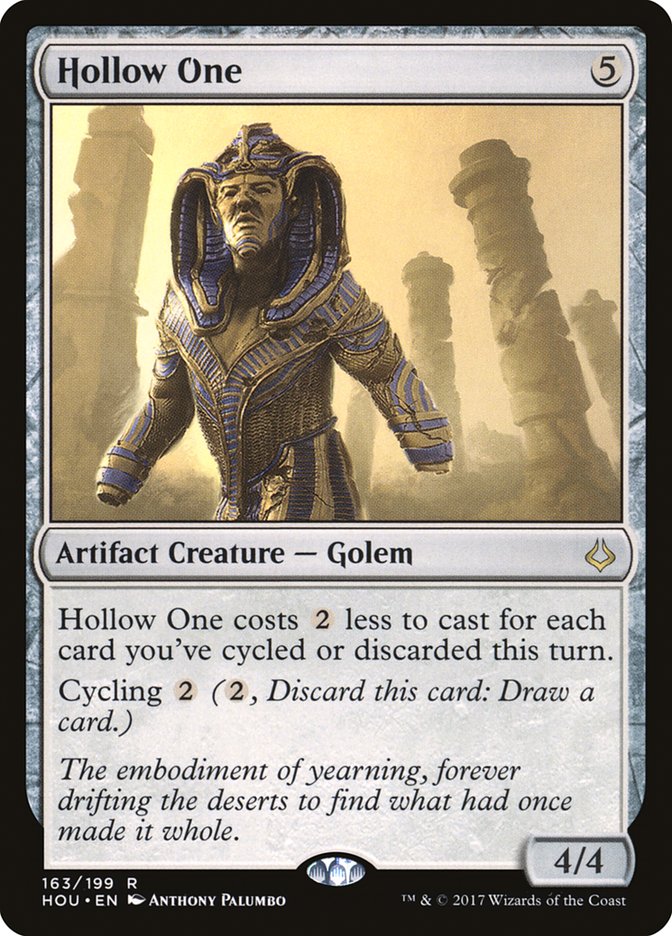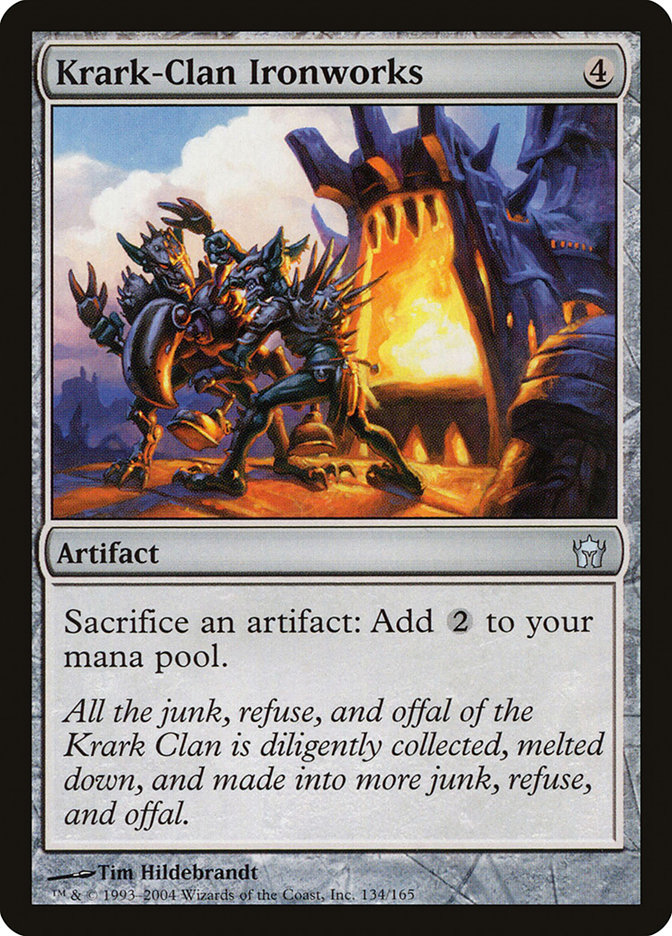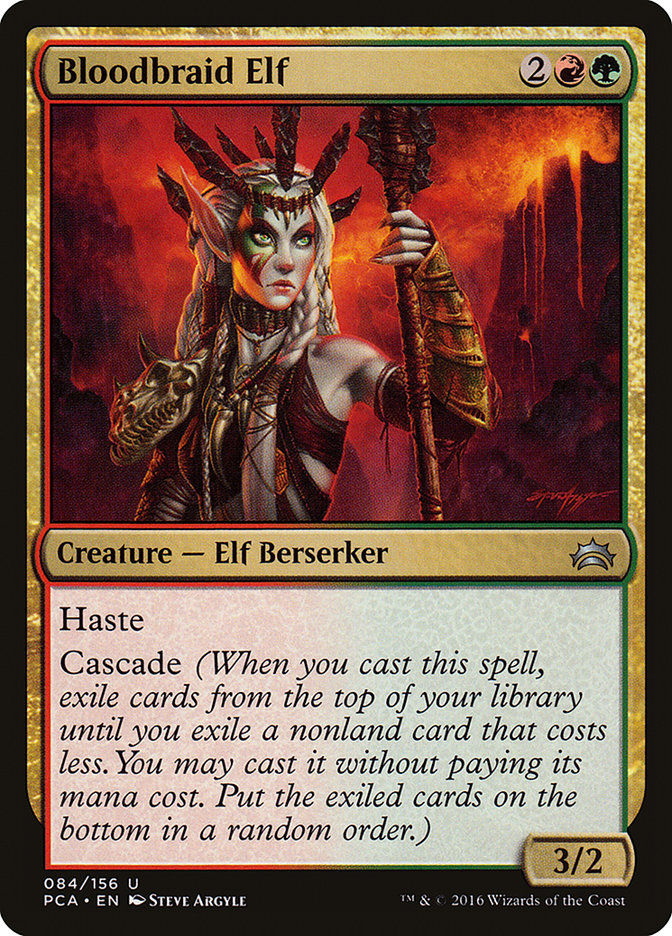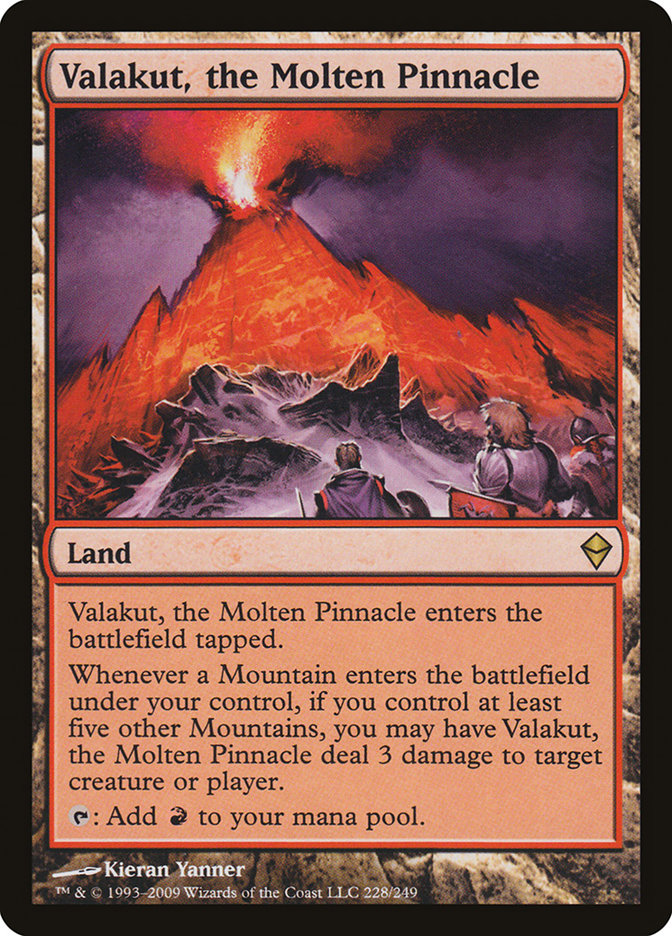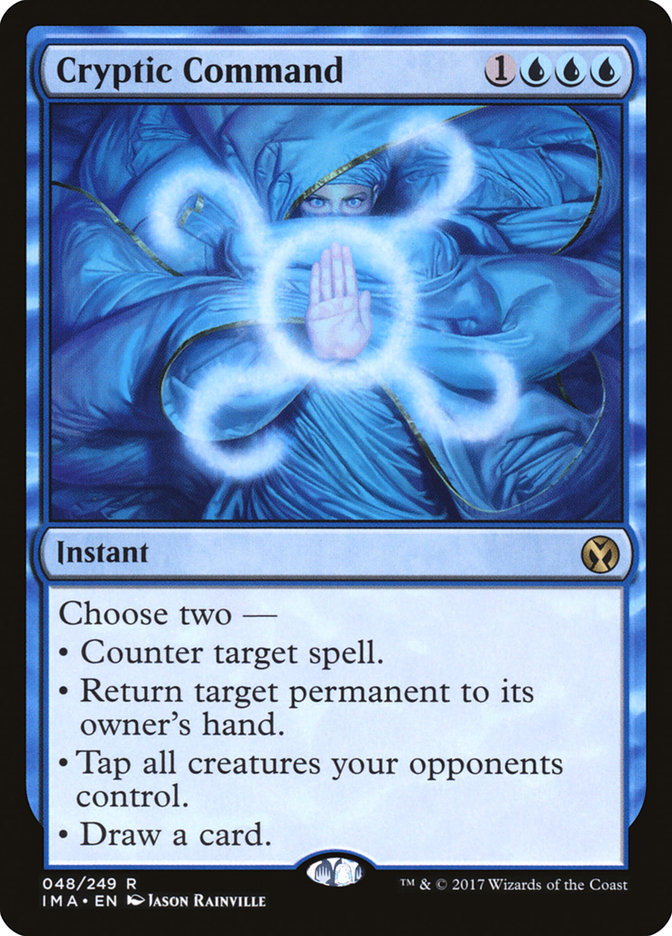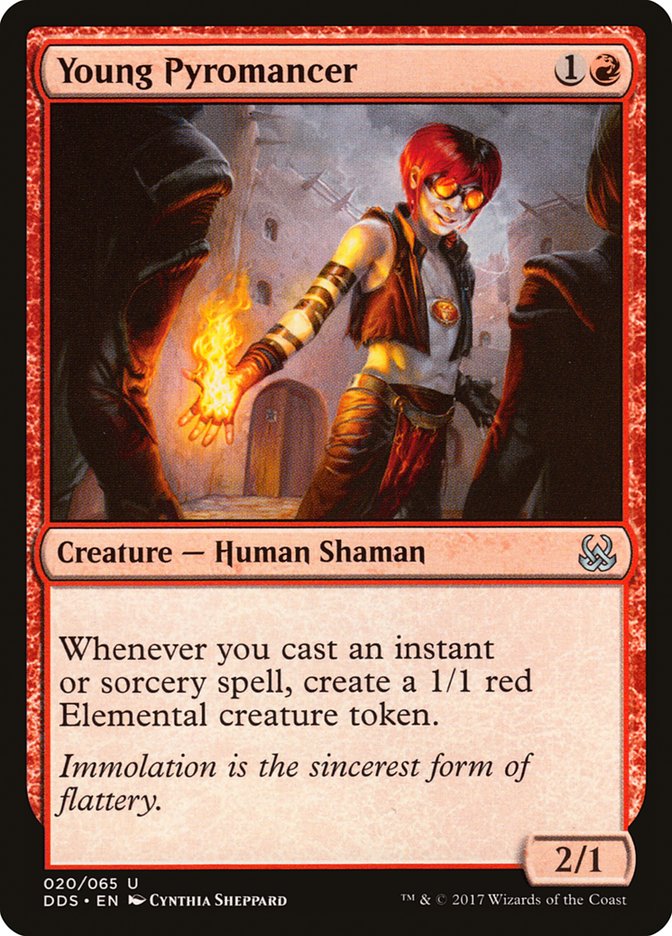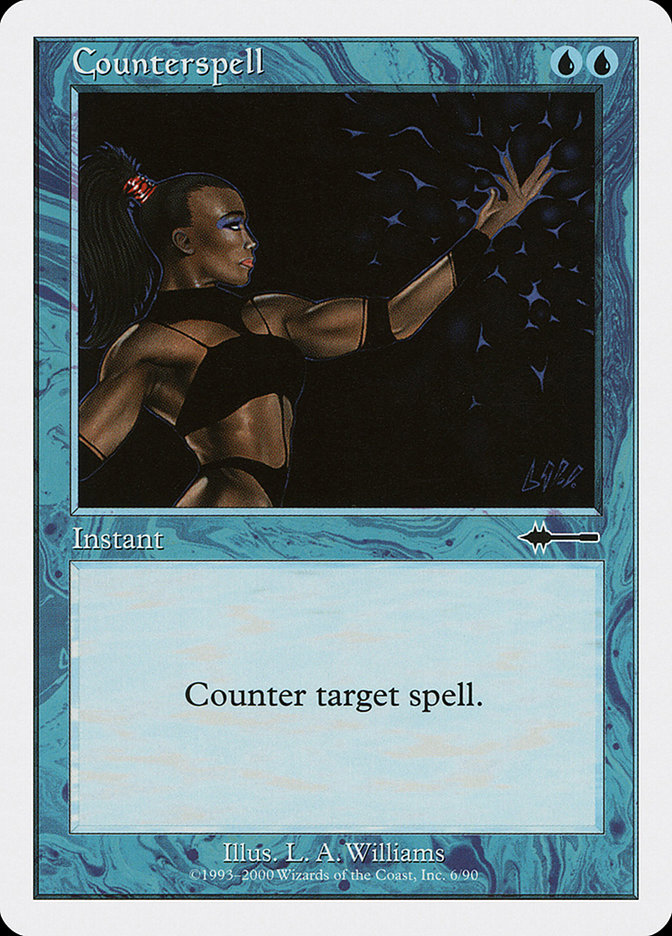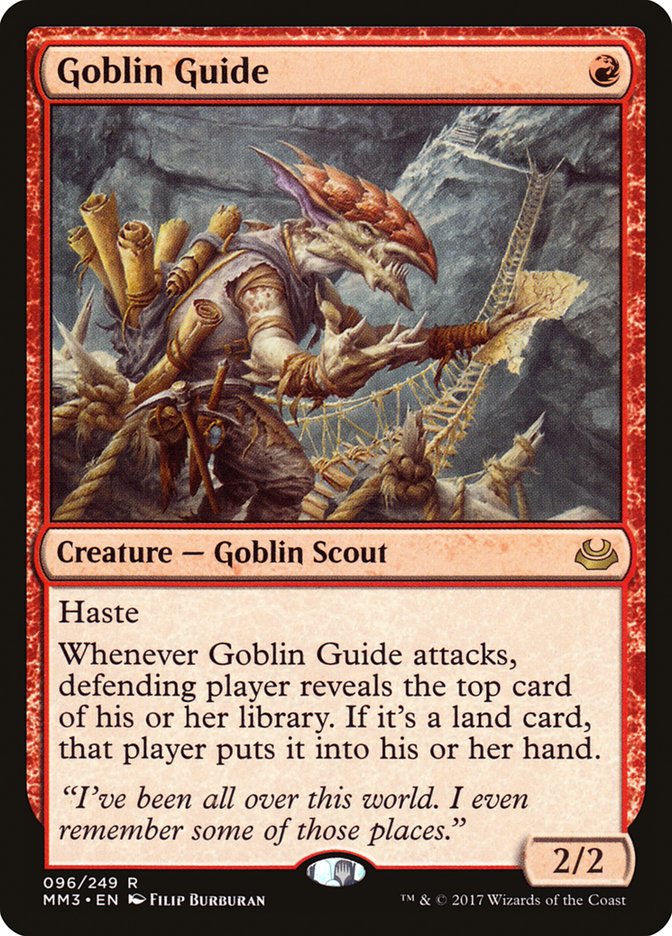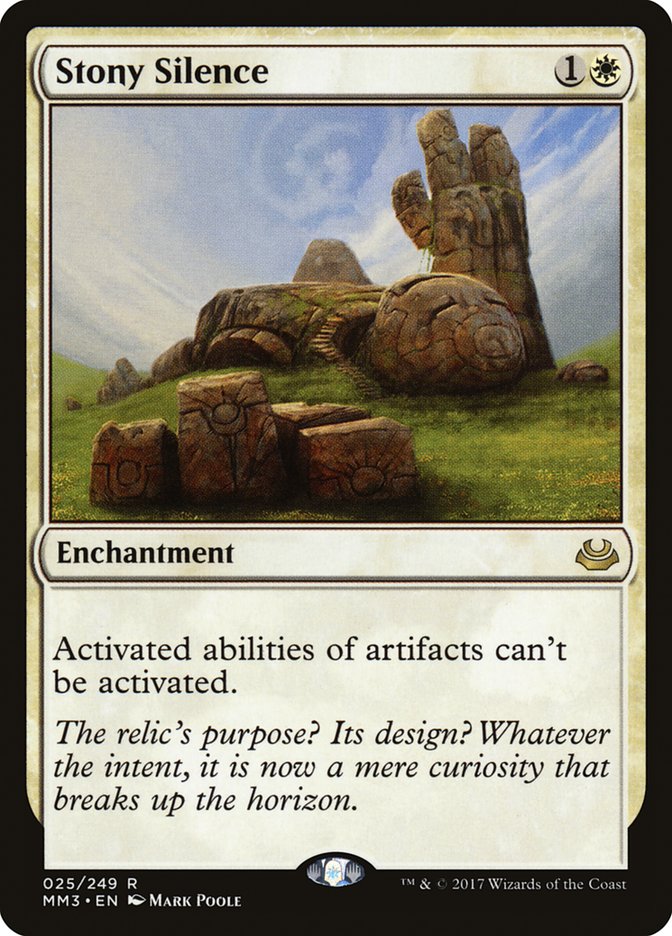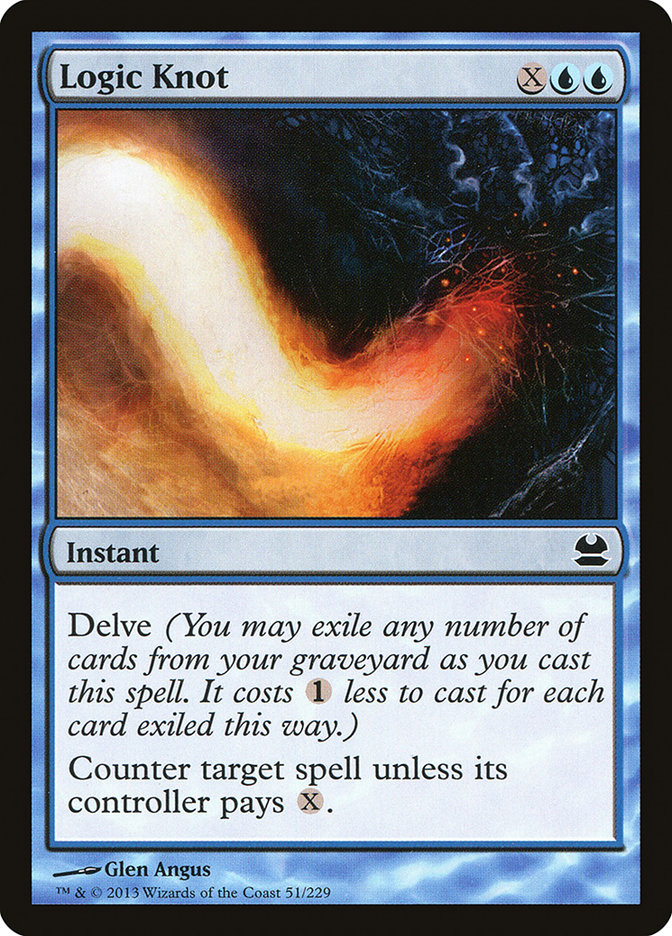The team that won Grand Prix Toronto played Humans in Modern.
The team that won the StarCityGames.com Baltimore Team Open two weeks ago
played Humans in Modern. Humans also won that weekend’s Modern Classic.
Humans is not the best deck in the format.
It does a real good job of pretending to be, though.
The cards Humans has used that delivered the biggest shock to the Modern
metagame are Meddling Mage, Thalia, Guardian of Thraben, and Kitesail
Freebooter.
Ignore all the other cards in Humans. Champion of the Parish, Reflector
Mage, and even Aether Vial aren’t distinctly better than the other stupid
stuff you can do in Modern. Call this the Affinity principle. Unless your
thing can legit be called better or as good as Mox Opal and Cranial Plating
in an opening hand, you’re still just another thing to do in the format.
For years, the discussion in Modern has been that there aren’t good blanket
answers to the linear decks. Thoughtseize or bust, where is Counterspell,
and so on. You then ended up down a rabbit hole where your doofy creature
deck needed hard removal for their Tarmogoyfs, then if you played
Thoughtseize too, you became a bad midrange deck, and then everyone just
played Jund. Or really tried to play a bad Hatebears deck and lost horribly
to everything.
Humans changed that by bringing Meddling Mage and Kitesail Freebooter to
the table. With a clock. Random Jeskai and Enduring Ideal decks had played
things from the “name a card” family before, but even Ad Nauseam had enough
time to find its Echoing Truth and Pact of Negations in those slots.
Let me tell you a different story.
After years of Glistener Elf and Chord of Calling, a really good answer for
those cards was printed. Something that also covered Tarmogoyf (unlike
Lightning Bolt) and didn’t give them a land like Path to Exile.
At first everyone playing cheap creatures that they cared about
individually started to play more of the things they traditionally used to
beat midrange and found Kitchen Finks didn’t cut it. So people just stopped
playing them, found decks that didn’t lose to Fatal Push, and Death’s
Shadow slid back to the Jund normal of 40-55% against the new field.
Now replace Fatal Push with Meddling Mage, Glistener Elf with Pyretic
Ritual, the anti-midrange measures with Lightning Bolt and Anger of the
Gods, and you see the same story. There’s an absurdly powerful new tool
that obliterates what was previously a major pillar or two of the format.
Things rapidly collapse into that being the best thing to do until everyone
gives up on their old decks, and then things rapidly flip to the new thing
being good but not amazing and slowly trickle towards it being mediocre
sometimes and great others like the rest of the metagame.
Humans is a victim of its own success.
But even with the good matchups gone, Humans could still be the definitive
best deck. We have seen creature decks cross this line before, where even
when people stop playing the easy matchups their skewed decks just can’t
cut it. So what separates Humans from Eldrazi Winter?
One thing that separates the two is the breadth of answers that interact
with Humans. In the Eldrazi era, you needed Path to Exile, Terminate, or
Supreme Verdict to manage Eldrazi.
You may notice that in a world where Thought-Knot Seer costs two lands of
mana, you are rapidly approaching mana parity on every exchange. With
Humans, Lightning Bolt hits it all. Fatal Push hits it all. Your midrange
deck is at mana parity on exchanges all the time, even through Thalia.
This vulnerability to more spot removal also opens weaknesses up to less
Mage’able linear decks. If they show up with Lightning Bolt or Fatal Push,
you’re going to lose way more velocity on the exchange than they are, and
your typical tools aren’t quite enough. You have reasonable plans against
Tron, Scapeshift, and other decks of that type, but you aren’t ahead if
they want to beat you.
Humans is also a deck that is less standalone and more additive than
Eldrazi, exposing it to sweepers. Meddling Mage covers some of that, but
when your opponent has Engineered Explosives and Damnation and spot
removal, good luck with that. Another viable approach appears.
This issue raises its head in another way against fair decks. Eldrazi could
go toe-to-toe with a Tarmogoyf. Humans has lots of smaller support
creatures. The same cards that are your greatest strength against combo are
your biggest liability against midrange. They can focus their removal on
the cards that actually break through, stall the others with a body, and
eventually just draw better cards. Even if your cards scale well, theirs
are just chosen better for a mid- to late-game slog.
Finally, Humans just isn’t as powerful. Your cards do less per card and
take more time, both in mana and damage. It takes more cardboard to
assemble a kill that matches turn two Thought-Knot Seer, turn three Reality
Smasher. Your mulligans hurt more. Extra lands drawn hurts more. You can’t
just steal wins from other decks as often as Eldrazi did.
To put things in context, I tried Humans briefly for Grand Prix Toronto. I
played a League on Magic Online, played a reasonable spread of decks
without any super crazy cards against me, and the best matchup I faced was
Affinity which is evenish at best. While it’s easy to just say I got five
bad matchups in the format, in other rounds with other decks people just
aren’t giving you ground.
It was feeling like Death’s Shadow late last year. Your best draws are
still good, but anything less doesn’t quite line up right and you’re hoping
for 55% at best. In a real event that margin falls off fast. Maybe you can
lean on the team event results shuffle to give you a little ground, but
Humans isn’t Affinity. You don’t get to go 11-2 because you drew a lot more
Mox Opals than normal or turn three your Storm opponent with Inkmoth Nexus.
You just get to make some big derps and hope it works.
The big lesson: If the reason your deck breaks Modern for a bit is the
answers and not the threats, expect that bit to be pretty short before
people figure out how to not play the cards you easily crush.
Reflection
So phase two is in place. What is your plan from there?
You have one deck you know you need to beat, you know a couple directions
people have gone to beat it, and you know some directions people aren’t
going. What then?
I opted to play Jeskai Control at Grand Prix Toronto last weekend.
I’m not the right person to tell you about how Teferi, Hero of Dominaria is great (that would be blue mage Jim Davis). It really is, but I’ve barely played double digit matches with
the deck as Standard and Draft testing for the next Pro Tour took priority.
This is more about knowing when it’s time to break your format boundaries.
I have dabbled in Modern a fair amount since the Jace, the Mind Sculptor
and Bloodbraid Elf unbans. I just haven’t felt happy with anything.
Hollow One felt somewhat unimpressive. I’m fairly sure I was playing it
wrong and keeping hands that were too speculative, but I wasn’t about that
life.
Humans, as mentioned, felt super average or unfavored against everything.
I toiled through several matches of executing the Krark-Clan Ironworks
combo online, and it just feels at par for the format. I lost to decks like
G/W Hexproof or Living End just doing powerful stuff without a real way to
interact. Other combo has interaction or has a faster clock or isn’t
artifact-based or gets to play redundant copies of its combo pieces. The
allure of Krark-Clan Ironworks is longer game resiliency when not faced
with hard hate, and I didn’t judge that to be the key to Modern with Jund
on the decline.
Jund just feels clunky and dated. Coming off the efficiency cantrip machine
that was Death’s Shadow, drawing a bunch of clunky and variable cards felt
like I was just doing it wrong.
Again, I remember being at this point late last year. I felt extremely
uncomfortable with all the decks I perceived as options. I showed up to
events with Grixis Shadow and it was just mediocre.
What did that leave me with? A pile of decks I had some grudge against? A
bunch of other decks that for various regions had aged out of the format?
The short-term solution was that I had to swing at something I normally
wouldn’t touch. The classic archetype change up, but not quite the classic
cause.
We usually think about this breaking into an archetype from the perspective
of a newer player who just hasn’t had the experience with the macro
archetype. You know, the stereotyped “only plays red” person suddenly has
to play an Island and starts having brain oozing out of their ears, or the
countermagic player starts casting Bomat Courier and doesn’t understand
combat damage.
But this is the reverse. I have played so many things in Modern that my
opinions have baggage. G/W Hexproof hasn’t changed since I first played it,
but most of my experience came at a time when Splinter Twin and Summer
Bloom were legal in the format. How can I make that experience relevant and
not just out of context garbage?
I have thought about solving this by parameterizing Modern.
I’ve clearly started down this path with macro archetypes, and that was more than useful enough to try again. There are only so many
unique relevant axes of interaction in the format. If you can cluster
things that matter together, you can start tracking down good leads.
Let’s start with a small scale example for Modern right now.
The most important decks in the format are currently U/W Teferi decks,
Humans (still solid but not great), Jund and Mardu, Affinity, Hexproof, and
Hollow One.
Stony Silence is moderately common among these decks. Ancient Grudge and
Kolaghan’s Command exist but aren’t super important.
These are largely creature-based, with small creatures being a large part
of the format. You need some answers to larger creatures but not a ton.
Engineered Explosives is great, as is Settle the Wreckage.
Snapcaster Mage plus Lightning Bolt is great, both because Snapcaster plus
removal beats the creature decks but also because in blue mirrors that is
the easiest way to pull position. Fatal Push, on the other hand, kind of
sucks, but Path to Exile is pretty great.
Liliana of the Veil and Thoughtseize are very hit or miss.
Blood Moon is not the most exciting card. Spreading Seas is okay against a
fair number of decks but not across the board insane.
There’s not a lot of graveyard hate, though it’s pretty good against many
of these decks. There’s also not a lot of land destruction, though Damping
Sphere is around.
All of this points towards TitanShift with Relic of Progenitus. Or maybe
Bring to Light Scapeshift with similar cards.
If there’s a deck I hate the most in Modern right now, that’s it. I have
played at least 30 matches with it over the last year, I have maybe won
ten. I didn’t even come close to considering it for Grand Prix Toronto, but
in retrospect I’m pretty sure that was just wrong. A system like this would
be extremely useful in finding open lanes in the future.
The one thing I want to note here is, again, I’m back to looking at answers
over threats. Some of it is how the answers line up against threats, but
honestly 90% of the threats in Modern are replaceable with a different
threat of equivalent power. Just dodge the answers and you’re okay.
I have no idea when Modern changed to being a format of answers mattering
more than threats, but it’s probably time to rethink what that means for a
top down view of a 30+ deck format.



